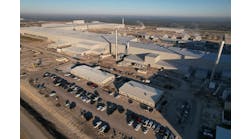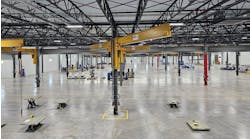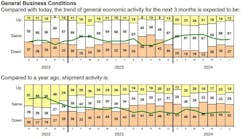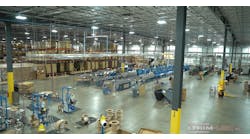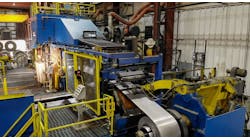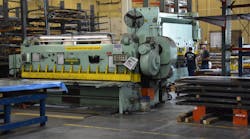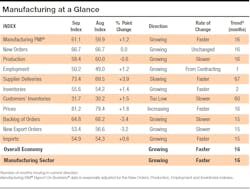Economic activity in the manufacturing sector grew in September, with the overall economy notching a 16th consecutive month of growth, say the nation's supply executives in the latest Manufacturing ISM Report On Business by the Institute for Supply Management.
The September Manufacturing PMI registered 61.1 percent, an increase of 1.2 percentage points from the August reading of 59.9 percent. A reading above 50 percent indicates that the manufacturing economy is generally expanding; below 50 percent indicates that it is generally contracting. A Manufacturing PMI above 43.1 percent, over a period of time, generally indicates an expansion of the overall economy.
"Business Survey Committee panelists reported that their companies and suppliers continue to deal with an unprecedented number of hurdles to meet increasing demand. All segments of the manufacturing economy are impacted by record-long raw materials lead times, continued shortages of critical materials, rising commodities prices and difficulties in transporting products,” Timothy R. Fiore, chair of the ISM manufacturing business survey committee, said. “Global pandemic-related issues—worker absenteeism, short-term shutdowns due to parts shortages, difficulties in filling open positions and overseas supply chain problems—continue to limit manufacturing growth potential.”
However, optimistic panel sentiment remains strong, with three positive growth comments for every cautious comment, according to the report. Panelists are fully focused on supply chain issues in order to respond to the ongoing high levels of demand.
What respondents are saying
- “In the U.S., labor availability is the most significant supply challenge for our company, with raw materials just behind. Plastic resin, polyurethanes, small-volume steel purchases and electronics are the biggest material challenges.” [Transportation Equipment]
- “Delivery and availability of raw materials, primarily carbon steel, are becoming more and more difficult to source. This has resulted in delaying order deliveries. Computer numerical control (CNC) machining services are at a premium; it’s difficult to get the deliveries needed to complete jobs. Traditional in-house machining now has to be outsourced due to a lack of experienced machinists. All this has had a negative impact on production throughput.” [Fabricated Metal Products]
- “Our company’s entire supply chain continues to have significant challenges getting manpower, which is impacting production of parts and ability to meet daily build schedules. Additionally, the logistics problems — especially port delays and a shortage of shipping containers — are significantly impacting inbound and outbound shipments. Raw materials costs still are at record highs, and we have raised customer pricing, with additional increases in the near future due to labor costs going up. Huge customer orders are nine months out (due to) backorders. Seeing this domestically and internationally.” [Machinery]
- “Global supply chain constraints are still a major concern and focus. Inventory builds continue to compensate for potential supply disruption.” [Miscellaneous Manufacturing]
Broadly, demand expanded, with the New Orders Index growing, supported by continued expansion of the New Export Orders Index, the Customers’ Inventories Index remaining at very low levels, and the (3) Backlog of Orders Index staying at a very high level.
Consumption (measured by the Production and Employment indexes) grew slightly during the period, with a combined 0.6-percentage point increase to the Manufacturing PMI calculation. The Employment Index returned to expansion after one month of contraction, but hiring difficulties at panelists’ companies show no significant signs of abating.
Inputs (expressed as supplier deliveries, inventories, and imports) continued to support input-driven constraints to production expansion, at higher rates compared to August. The Supplier Deliveries Index reversed a recent pattern of softening, while the Inventories Index continued to expand faster due to work-in-process inventory being held longer because of key part shortages, as well as more finished goods inventory being held due to downstream customer issues. The Prices Index expanded for the 16th consecutive month, at a faster rate in September, indicating continued supplier pricing power and scarcity of supply chain goods.

